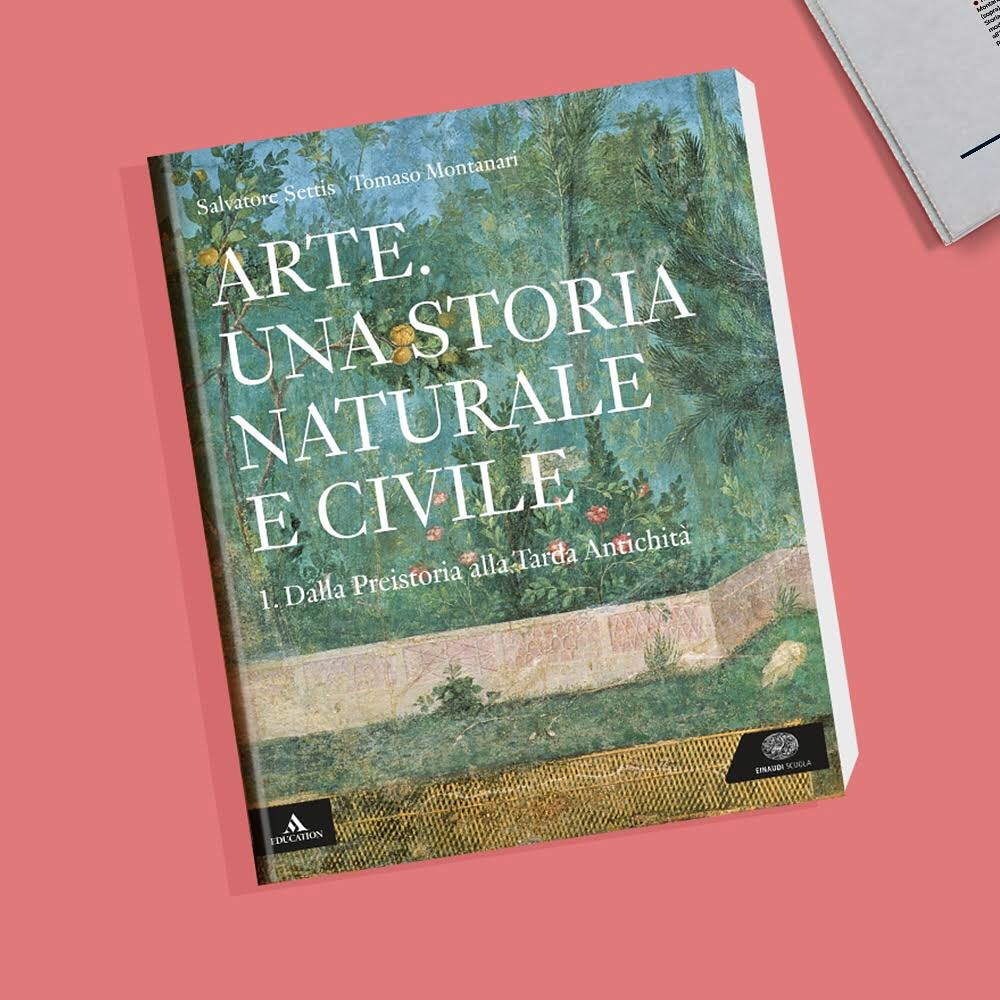Tomaso Montanari on the theft of the Caravaggio. Preview of the new handbook Art. A natural and civil history
The approach to the study of art history has changed a great deal over the centuries, but still relies on the analytical description of works of art. In response to the static nature of this manualistic tradition, Salvatore Settis and Tomaso Montanari propose a different way of conceiving art history, with an innovative five-volume manual intended for schools but that every citizen should study: Art. A Natural and Civic History (Mondadori Education under the Einaudi Scuola brand).
Art history is a living language that should be learned when young, and teaching it is the school’s job. It is in school that one can learn to look around and consider the relationship with art an everyday affair. Not an accessory or a luxury for the few, but a condition of the full development of humanity. Hence the need for Settis and Montanari to emphasize the natural and civic dimensions of art, too often neglected or misunderstood: a natural history of art, which continually questions the relationship between human nature and art making, investigating its cultural, psychological and anthropological constants; and a civil history of art, which restores awareness of the uniqueness of the Italian territory, to commune with memory and history, with the depth and variety of our landscapes.
Presented to teachers in recent months for adoption in the coming school year, the manual will be available in school bookstores from September.
The following is a preview of an excerpt by Tomaso Montanari, taken from the text Un patrimonio saccheggiato included in vol. 2 Dall’Alto Medioevo alla fine del Trecento. The author dwells on Caravaggio’s Nativity , stolen from Palermo in 1969 (and lately dated to the 1600s, see focus of Finestre Sull’Arte), which, for him, represents “only the tip of an embarrassing iceberg.”
Italy is the country most affected by art theft, with an estimated 20,000 works disappearing every year.
It was the writer Leonardo Sciascia (1921- 1989) who wondered “whether works of art and testimonies of past civilizations are as important in our country as laws and rhetorical attitudes would have us believe, or whether they are not instead a burden, a hindrance, of which a ruling class as profoundly ignorant as it is voracious wants as soon as possible, and by all means, to get rid.” These are words written in the aftermath of the most famous art theft in modern Italian history: that of Caravaggio ’s Nativity stolen from the Oratory of San Lorenzo in Palermo on the night of Oct. 16-17, 1969. In 2018, the Antimafia Commission was able to establish that the work was cut into pieces, some of which plausibly still survive, in some private collection. But Palermo’s Caravaggio is just the tip of an embarrassing iceberg. Museums and public monuments, lacking adequate staff and surveillance, are among the most recurrent victims: sensational was the theft of five capital paintings from the Pinacoteca Estense in Modena (1992), or the November 2015 robbery in which seventeen paintings from the Museo di Castelvecchio in Verona were stolen. In these two cases, the works were then, painstakingly, recovered: not so for the sacred furnishings, marbles, and sculptures detached from churches in Naples and other cities, often closed to all but the thieves. A silent hemorrhage that is being financed by unscrupulous trade and collecting and that is slowly eroding the context that gives meaning to the most famous, and seemingly safe, works studied in a manual such as this (T.M.)
On the “looted heritage” and in particular its recovery, the exhibition L’arte di salvare l’arte. Fragments of the History of Italy, underway at the Quirinale until July 14 - held on the occasion of the 50th anniversary of the establishment of the Comando Carabinieri Tutela Patrimonio Culturale, a specialized department of the Carabinieri established in 1969 precisely to combat crimes against our historical and artistic heritage.
In the following images: the cover of the book Art. A Natural and Civil History by Settis and Montanari, and Caravaggio’s Nativity.
 |
 |
| Tomaso Montanari on the theft of the Caravaggio. Preview of the new handbook Art. A natural and civil history |
Warning: the translation into English of the original Italian article was created using automatic tools. We undertake to review all articles, but we do not guarantee the total absence of inaccuracies in the translation due to the program. You can find the original by clicking on the ITA button. If you find any mistake,please contact us.





























